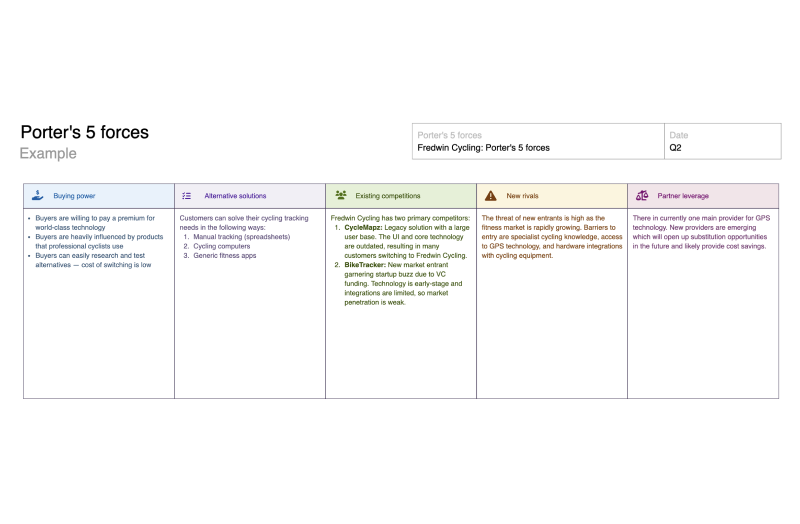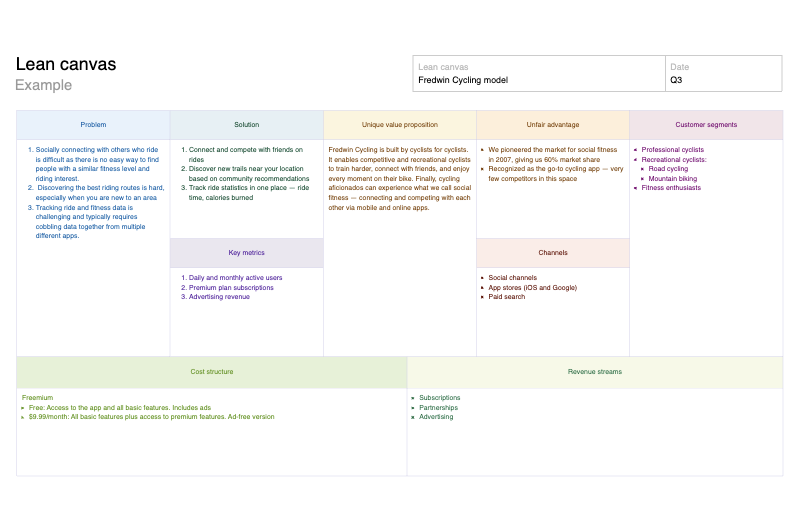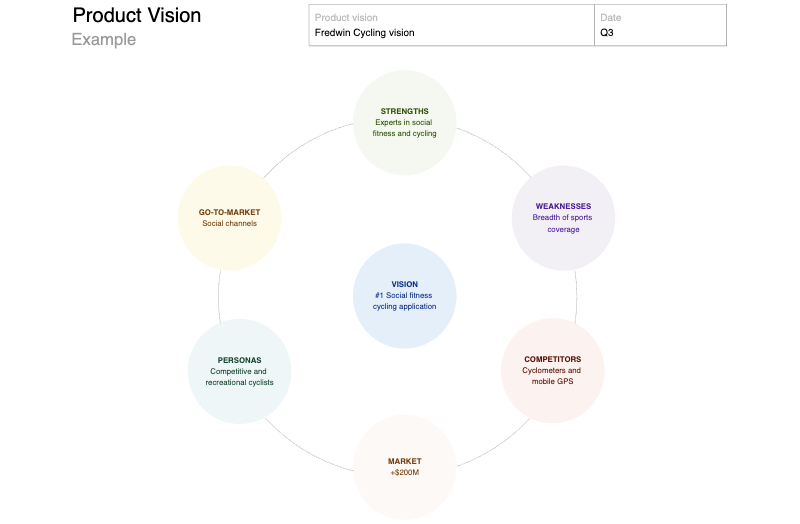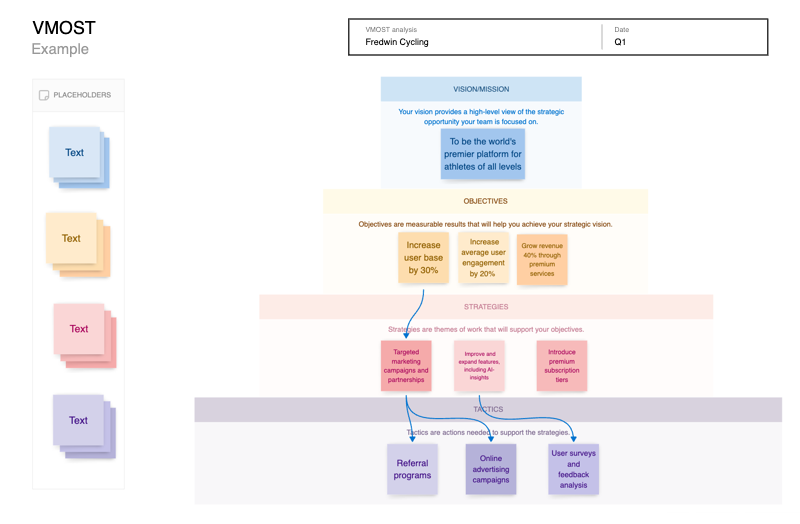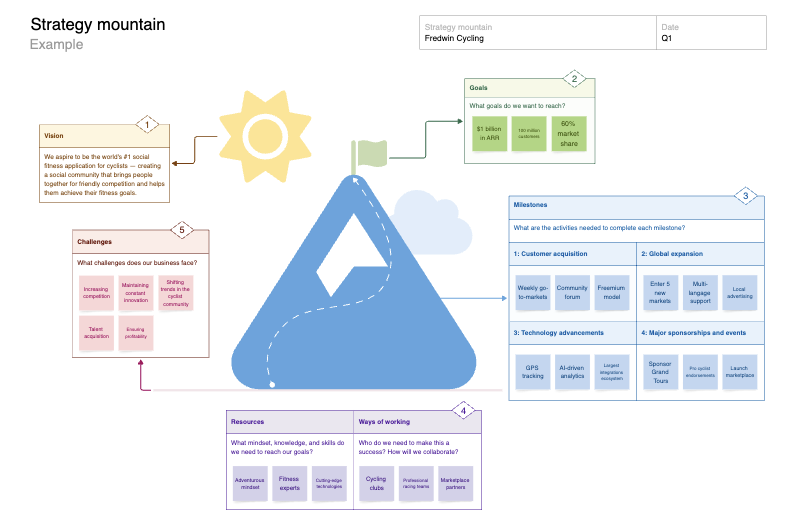Business model template
Explore foundational questions about your business and refine your product strategy
Use template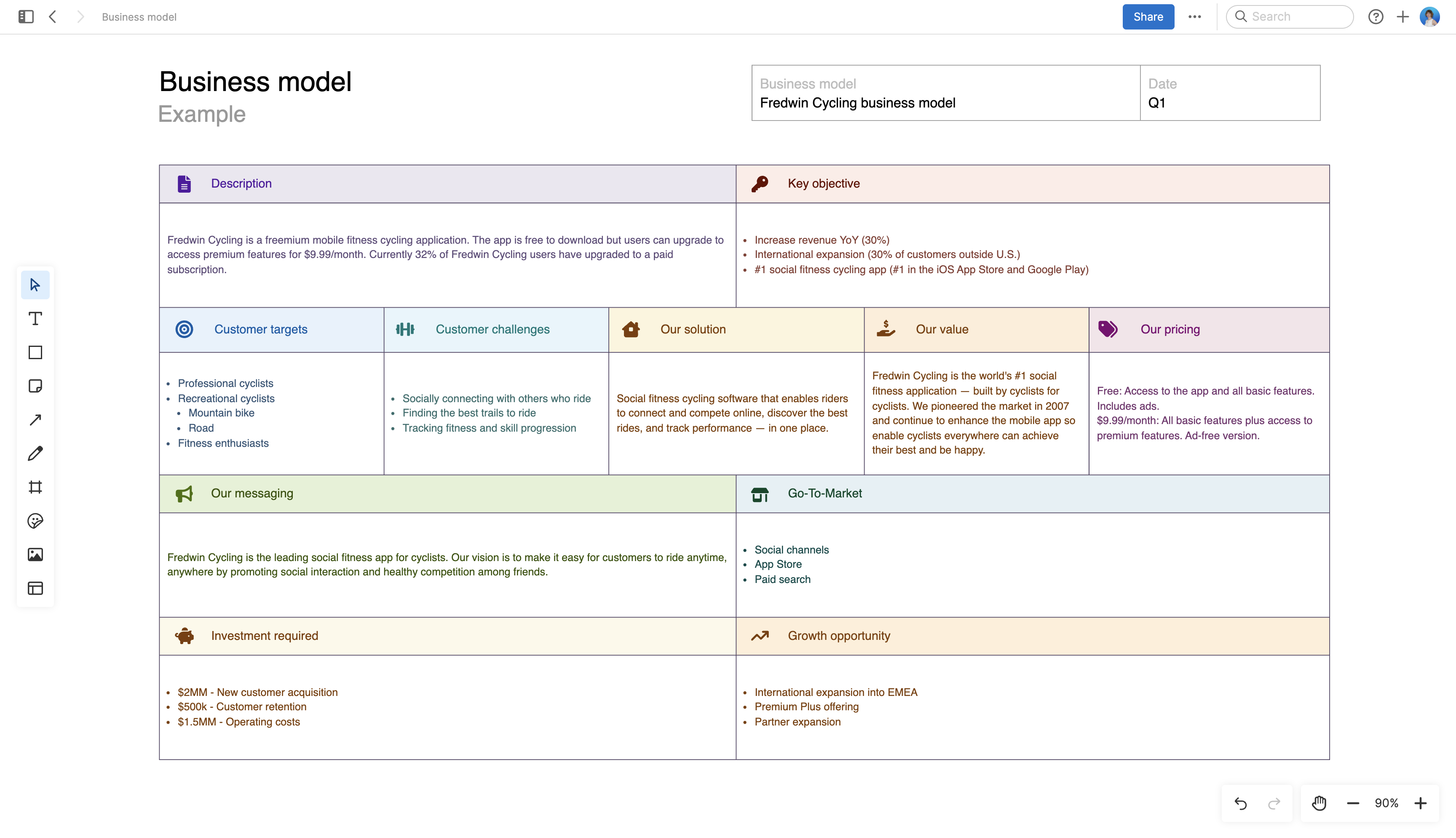
About the business model template
Innovation involves more than the products or technologies you build. It is also about how you operate and stand out in a crowded marketplace. Use this template to analyze key business and market factors in a single view. It includes 11 fundamental areas that help identify the problem you will solve, the market you will serve, the level of investment required, what products you will offer, and how you will generate revenue.
Included in the business model template
This template includes everything you need to define your business model:
Table for capturing core components
Color and icons for visual emphasis
Example for inspiration
Customize the business model template to your needs, then share the whiteboard with as many people as you want to streamline collaboration. This template includes the following capabilities to help you define your business model:
Collaborate live or asynchronously to build your business model
Invite stakeholders to provide input and comments
Lock editing once you finalize your plans
Create a slide-based presentation directly from your whiteboard
Make your business model available as a shared webpage
How to use the business model template
Your business model is the foundation for your overall company and product strategy. Whether you are starting a new venture, expanding into a different market, or shifting your go-to-market approach, it is important to set a clear direction for success. Use your business model to guide decisions about how you will create customer value and achieve business growth.
This template is an ideal way to start building your business model. After you complete the exercise, make the model accessible to the team so everyone understands the high-level approach. Consider using a more sophisticated tool (such as Aha! Roadmaps) to implement your business model — so you can tie strategy back to work at every level of your organization.
Best practices
Capture your business model in a single view to drive strategic conversation around growth opportunities for new and existing products and services.
Articulate your strategic building blocks Include important details about who your customers are, the pain points they need to solve, and the value your solution provides. Then summarize your messaging and go-to-market approach to show how you will reach and engage your target audience.
Establish clear objectives Highlight your business goals and how you will measure success. Consider the costs required to drive business growth. This keeps your plans grounded in reality.
Push your thinking Invite colleagues to the whiteboard — teammates can easily add comments or questions as annotations. Encourage critical thinking to help validate the assumptions you are making about your business.
Connect to everyday work Keep your business model at the forefront of your product decisions. Revisit your model periodically and update it to reflect new learnings and revise your growth strategy.
FAQs about the business model template
Why is building a business model important?
When done right, a business model lays out a clear path for building something meaningful. It distills a company's potential down to its essence and becomes the foundation for all things strategy. Your business model will ultimately guide your organization and influence your product roadmap.
What are some best practices for building a business model?
A good business model is simple and easy to understand. It answers key questions about what you want to achieve and for whom. Although it is important to incorporate feedback from trusted advisors and other leaders at your company, stay true to your values and vision — you will need to distinguish useful feedback from misguided opinions.
Who is this business model template for?
This business model template is useful for anyone building something new. Founders and product builders alike need to clearly define their goals, target audience, and pathways to progress. This template forces deep analysis and encourages pragmatic decision-making.
Is this template free to use?
To use this business model template, sign up for a free 30-day trial of Aha! Whiteboards. (You can also try this template in Aha! Roadmaps if you need a complete product management solution). Easily customize the template to suit your needs, and then share it with as many people as you want (for free) to streamline collaboration.
